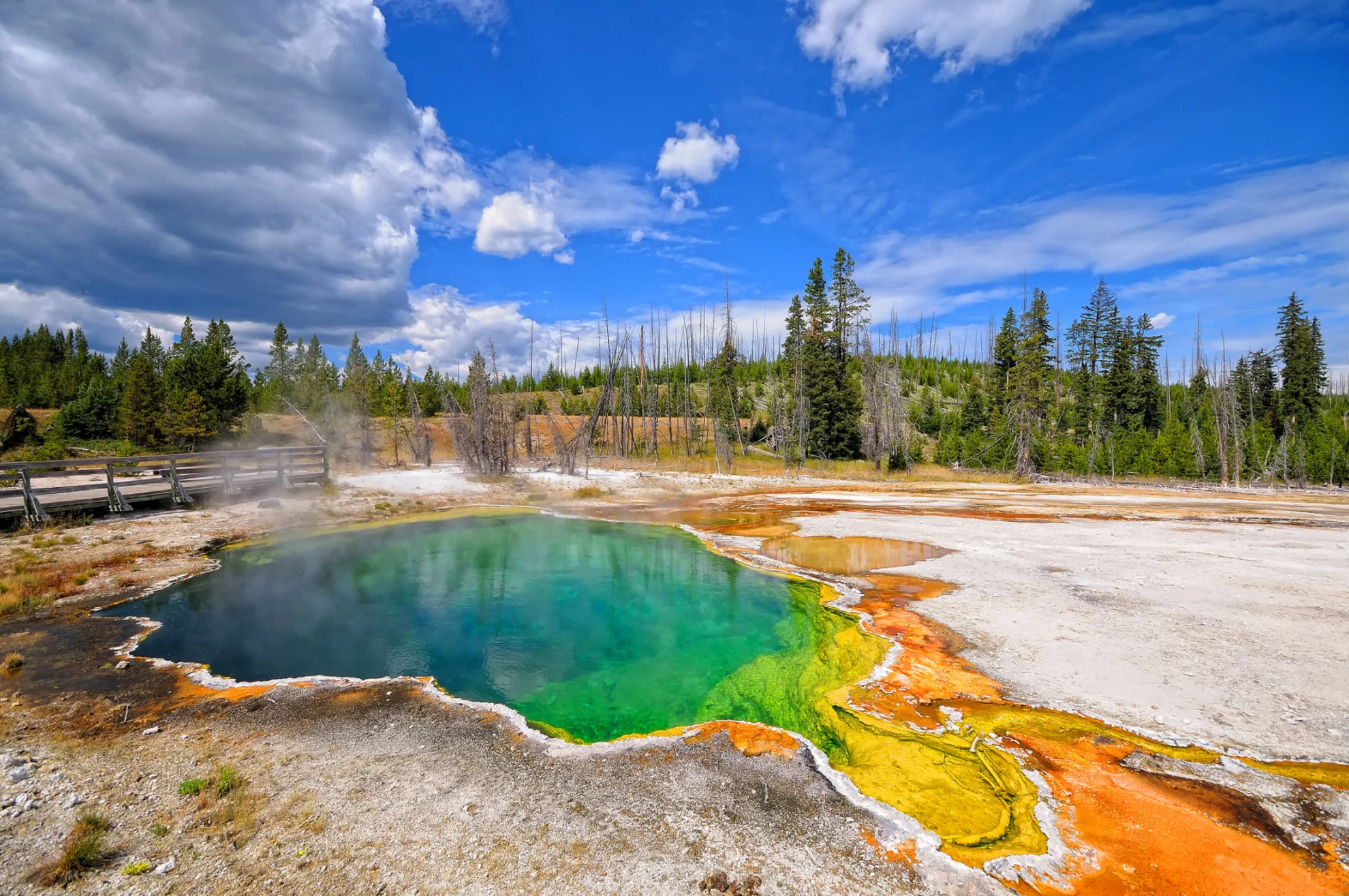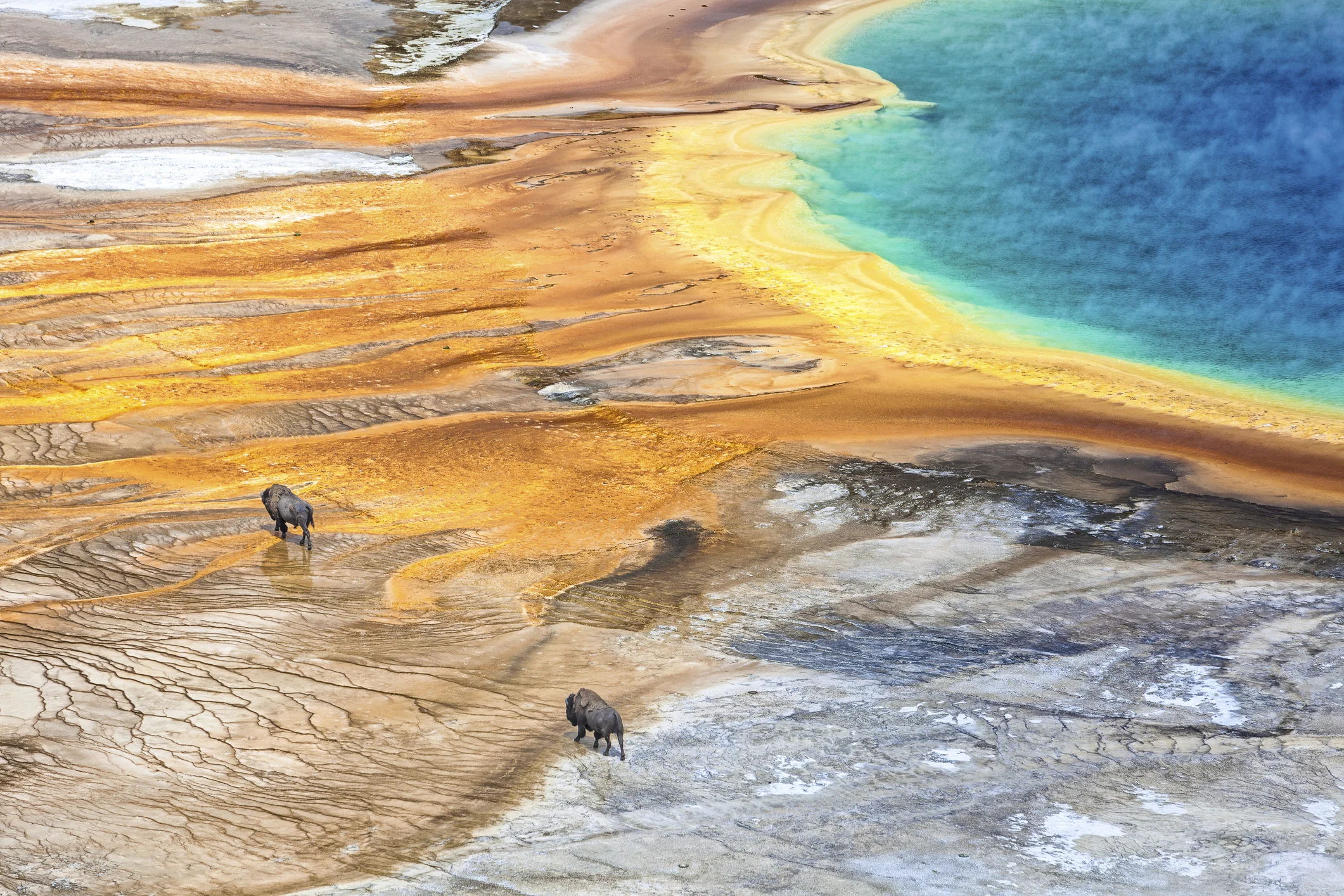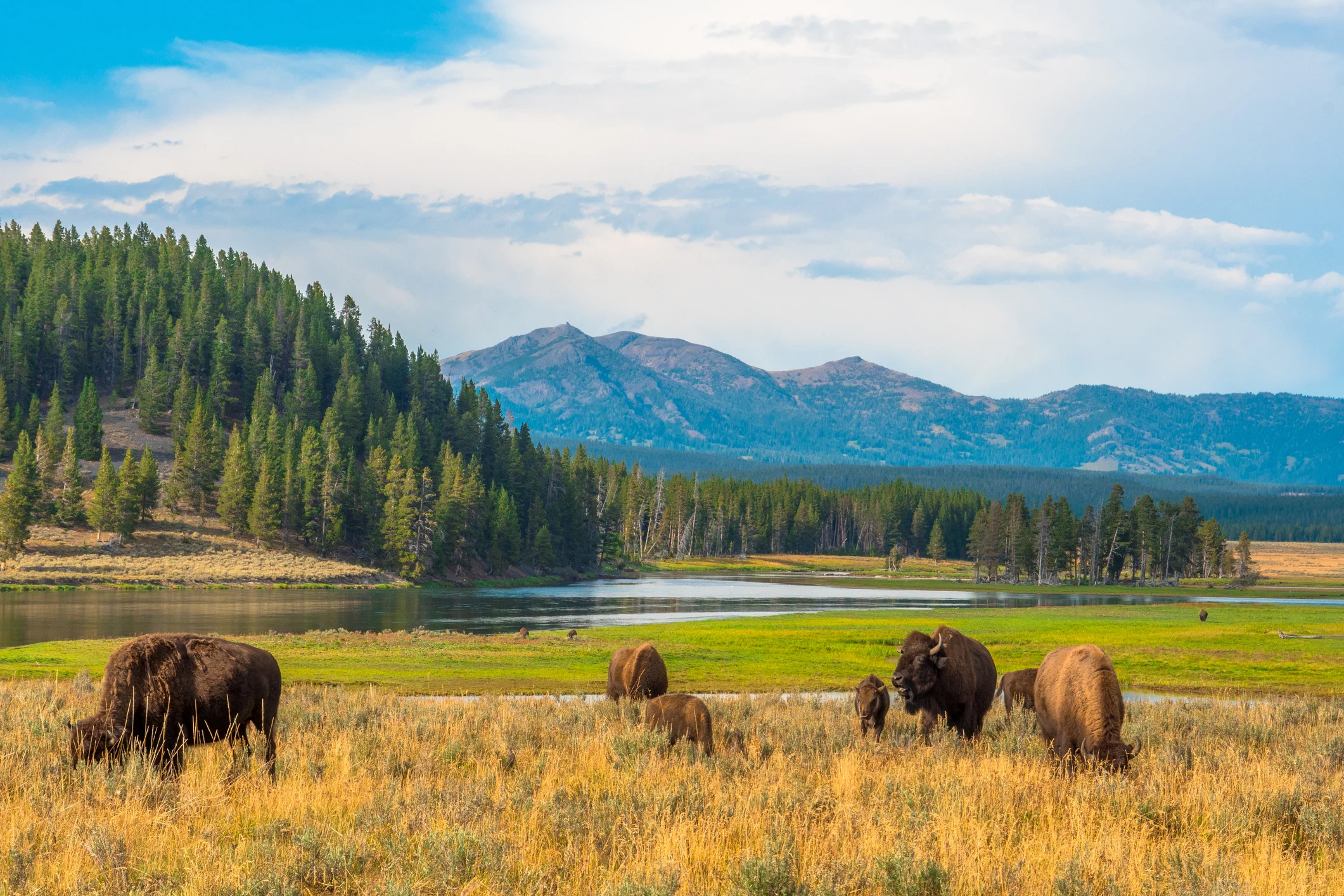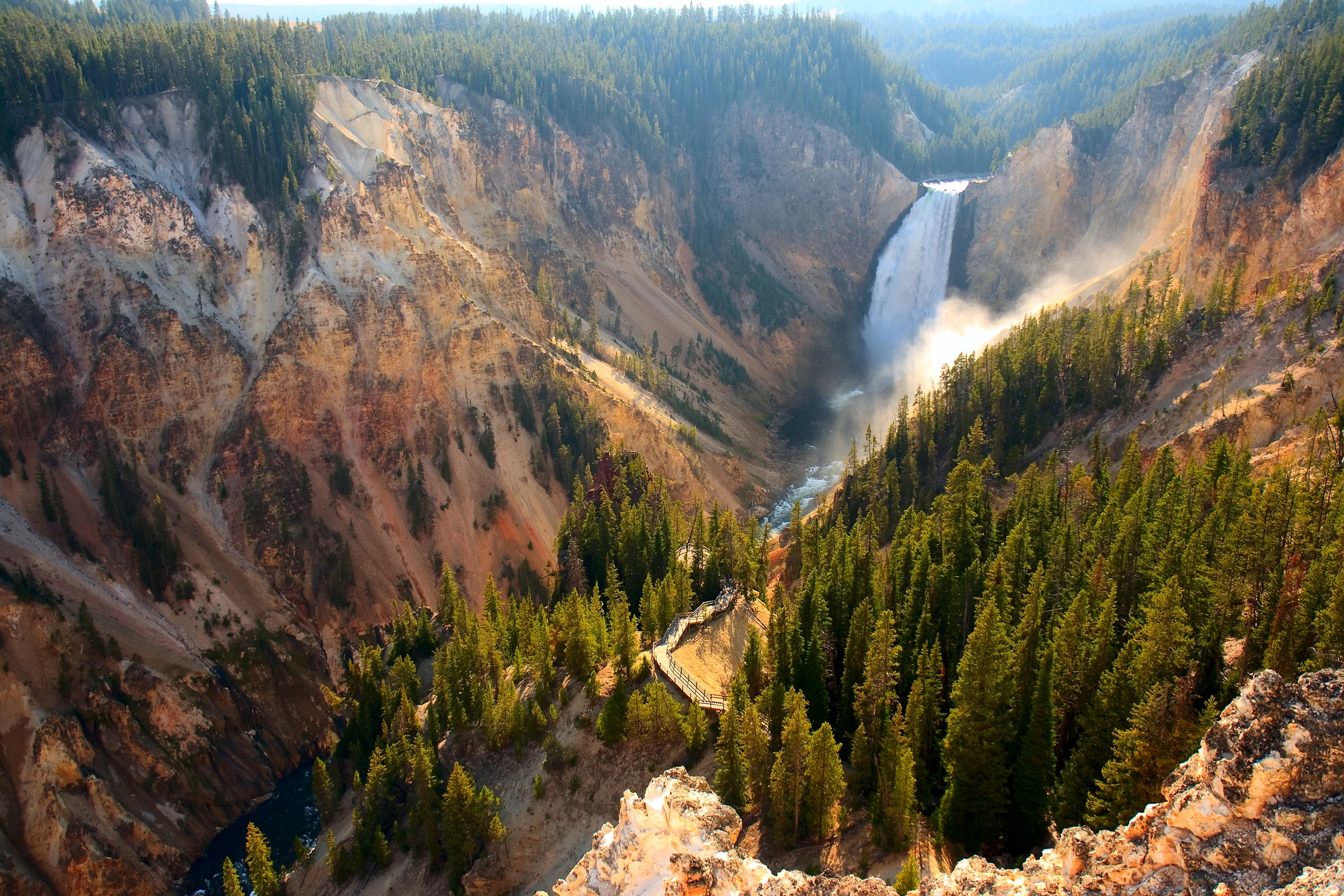
Yellowstone National Park is hotter than ever, scientists say
Yellowstone National Park experienced an unprecedented warming trend over the past 20 years and researchers say that this will likely have serious impacts on the unique region.
Yellowstone National Park’s famously harsh environment is once again making headlines, this time for the scorching temperatures that are becoming increasingly common at the park.
A study published in Geophysical Research Letters states that summer temperatures are quickly climbing and the month of August 2016 ranked as one of the hottest summers the park has experienced in the last 1,250 years.
Scientists analyzed tree ring data from Engelmann spruce trees to reconstruct the park’s climate from the years 770–2019, which revealed that 2016 was the single-warmest year on record.

Grand Prismatic Geyser with American Bison passing by in Yellowstone National Park. (Daniel Osterkamp. Moment. Getty Images)
The temperature rise since 2000 has been the most intense period of warming on record and four times more intense than the Medieval Climate Anomaly. This historic warming event occurred from 750 to 1,350 when temperatures in the Northern Hemisphere, South America, China, and Australia were up to 1°C higher than those during 1960–1990.
The study says that annual surface air temperatures across the western U.S. have increased by more than 1°C since 1900 and will continue to increase with continued greenhouse gas emissions and other human activities.
The data revealed that a warming trend began around 1450 and continued into the mid 1600s, which was then followed by roughly 250 years of low variability in temperatures. An “intense warming trend” then began in 2000 and the study says it “far exceeds conditions during any other period over the past 1,250 years, particularly during the Medieval Climate Anomaly.”

Buffalos grazing at Hayden Valley, Yellowstone National Park. (Manel Vinuesa. iStock / Getty Images Plus)
Twenty years from 1050 to 1070 featured the most extreme warm event, but the period from 2015–2019 is twice as intense, albeit a shorter duration.
“As 2020 rivaled 2016 for the highest global surface air temperatures on record, current and impending projections of increasing anthropogenic warming, especially for the midlatitudes, suggest that the modern warming will likely soon surpass the Medieval Climate Anomaly,” the researchers hypothesize.
The study says that some of the impacts that Yellowstone National Park could experience as the climate changes include increased fire activity, aridification, extreme drought conditions, and declining biodiversity levels.

The Yellowstone River crashing over the Lower Falls in Yellowstone's Grand Canyon. (MorningDewPhotography. iStock / Getty Images Plus)
“Continued warming will likely lead to increased drought conditions and exacerbated fire regimes (e.g., larger, more severe), threatening to push area ecosystems past a tipping point and leading to a major demographic resetting of the Greater Yellowstone Ecoregion,” the researchers conclude.
“During this era of rapid environmental change, there is a dire need for updating tree-ring records that are temperature sensitive. An updated, high-density temperature proxy network would allow for (1) assessing the degree of spatial and temporal heterogeneity of the 21st century warming trend across western North America and (2) disentangling the relationships between long-term temperature variability and broad-scale climate forcing mechanisms.”
Thumbnail credit: Philippe Sainte-Laudy Photography. Moment. Getty Images

